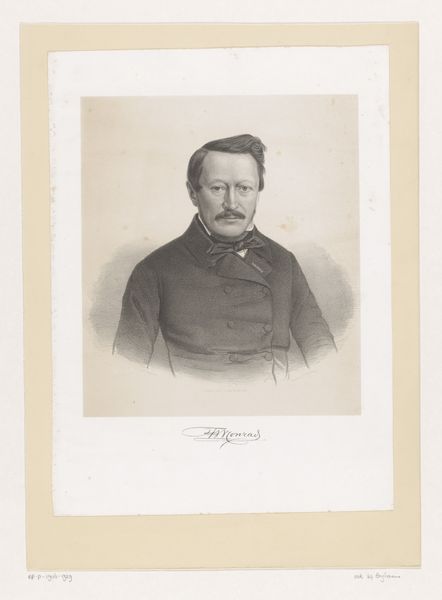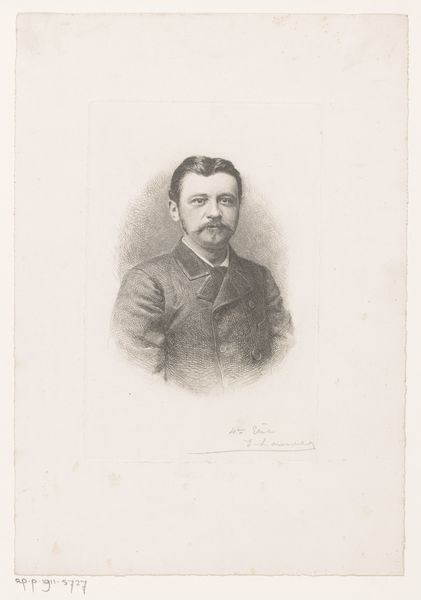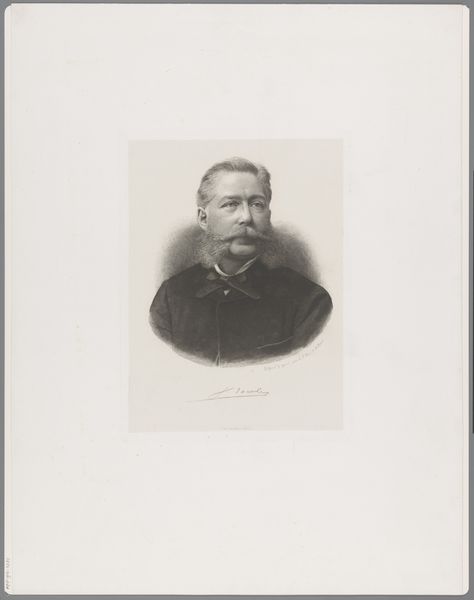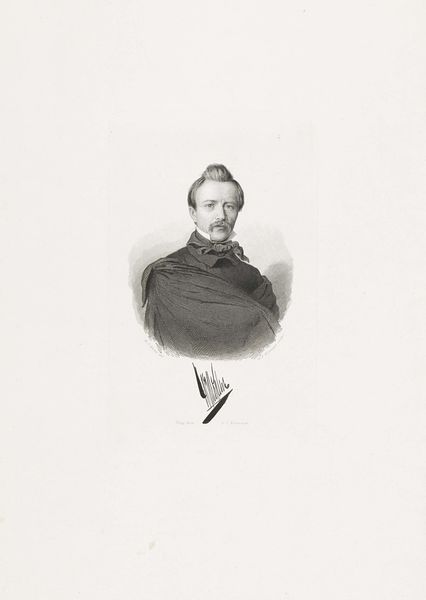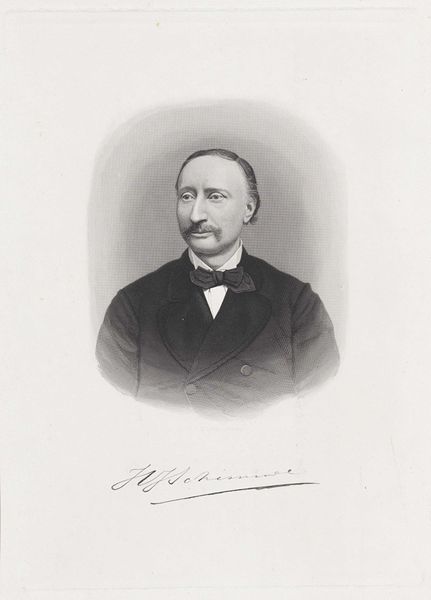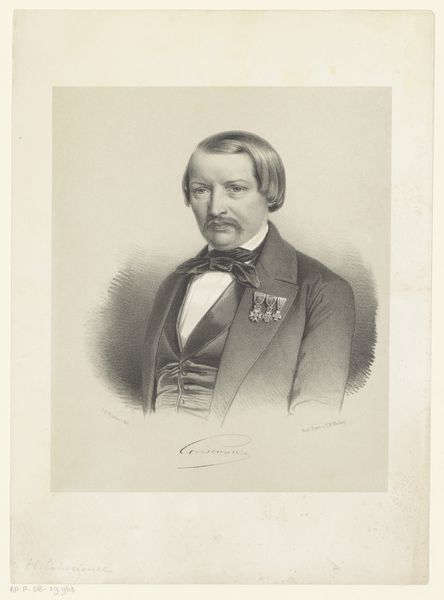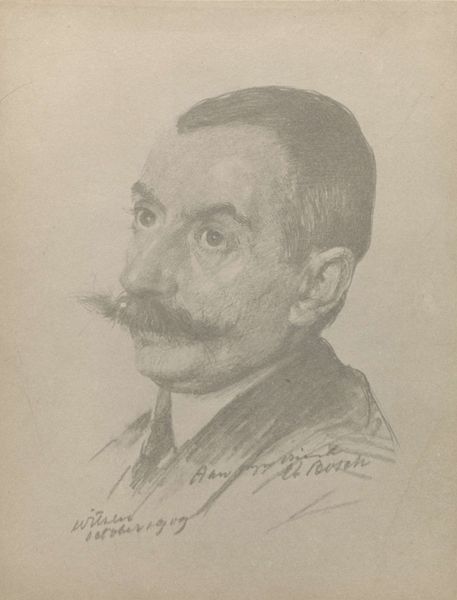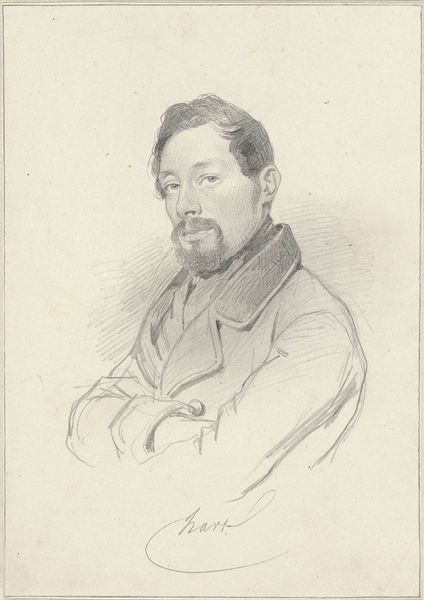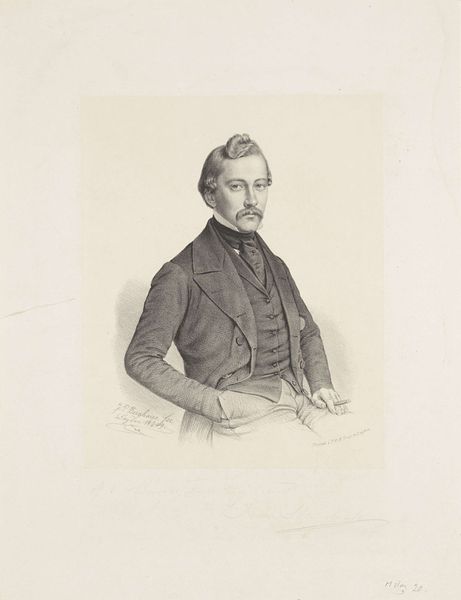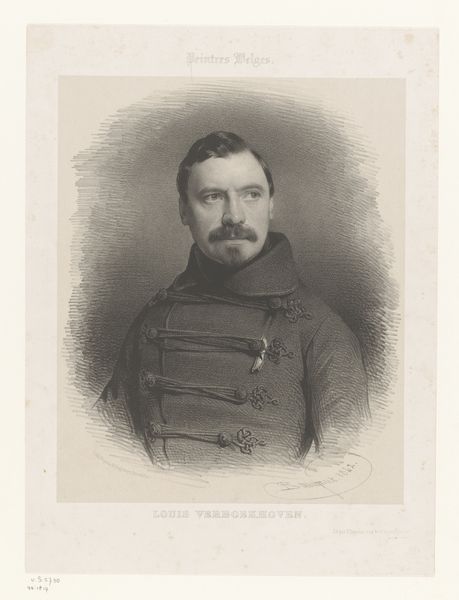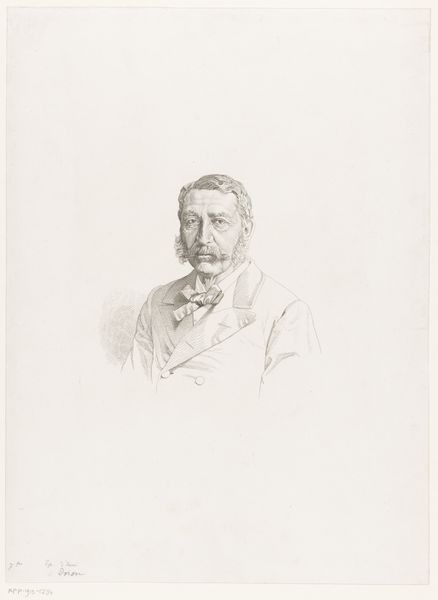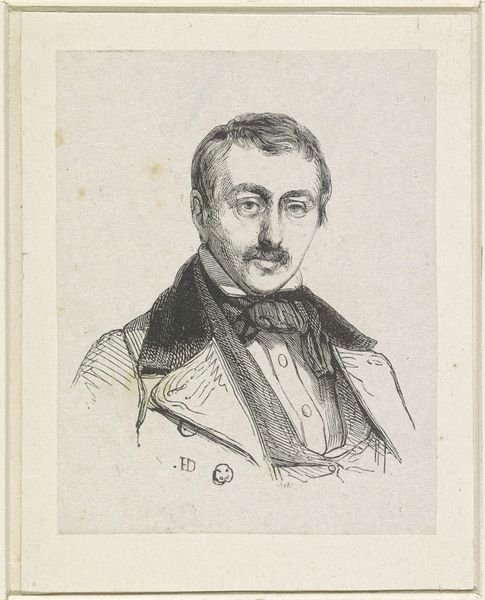
drawing, pencil
#
portrait
#
drawing
#
pencil drawing
#
pencil
#
portrait drawing
#
realism
Dimensions: height 440 mm, width 301 mm
Copyright: Rijks Museum: Open Domain
Editor: So, this is a pencil portrait, possibly from 1852, titled "Portret van Frederik Willem Conrad" by Johann Peter Berghaus. It's at the Rijksmuseum. I find it compelling how such a simple medium conveys so much about the subject's character. What strikes you about this work? Curator: It's interesting how this seemingly straightforward portrait speaks volumes about the social role of engineers and intellectuals in the Netherlands at that time. Notice how Conrad is presented: not as a revolutionary or a flamboyant artist, but as a respectable, almost bourgeois figure. It's a deliberate choice, isn’t it? The Realism movement served a burgeoning sense of Dutch nationalism. What do you think this choice of realism conveyed to viewers in the mid-19th century? Editor: I guess it made him relatable? More a man of the people, despite his position? I suppose more dramatic imagery would have been, perhaps, considered affected or aristocratic? Curator: Exactly. Think about the broader context: the push for modernization, industrial development. Conrad, as an engineer, was instrumental in that. Presenting him in this way emphasizes the importance of these figures, validating their place in society, subtly nudging towards acceptance of societal development. Editor: It's amazing how much is communicated just through the style. I was focusing so much on the man himself, but this makes me consider the purpose behind his representation and how that ties to the public. Curator: The “politics of imagery,” exactly. What did you take away from our chat? Editor: I realized that it's vital to consider who the portrait served, and what its reception was amongst a changing social landscape. The simplicity isn’t just an aesthetic choice, it reinforces a narrative. Thanks!
Comments
No comments
Be the first to comment and join the conversation on the ultimate creative platform.
